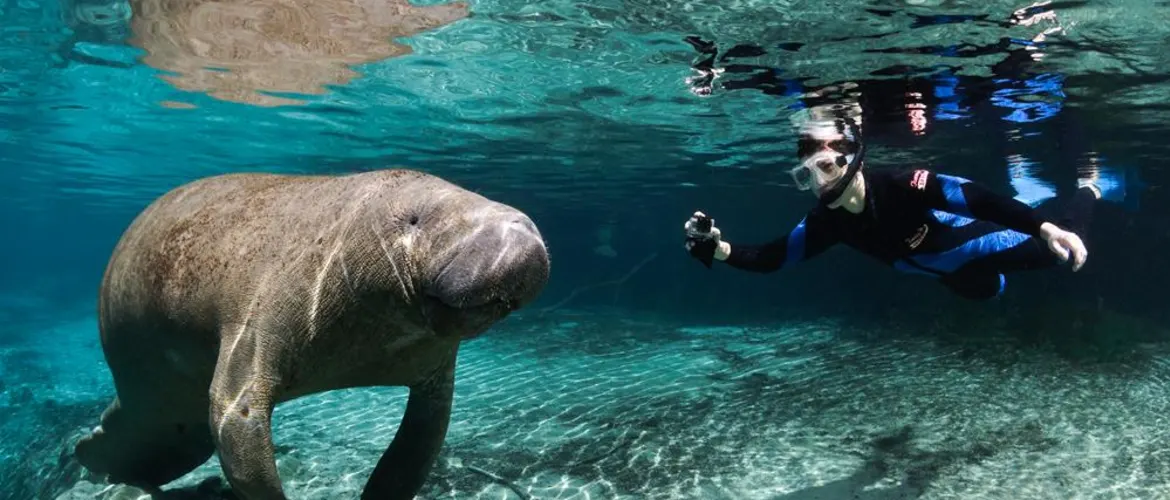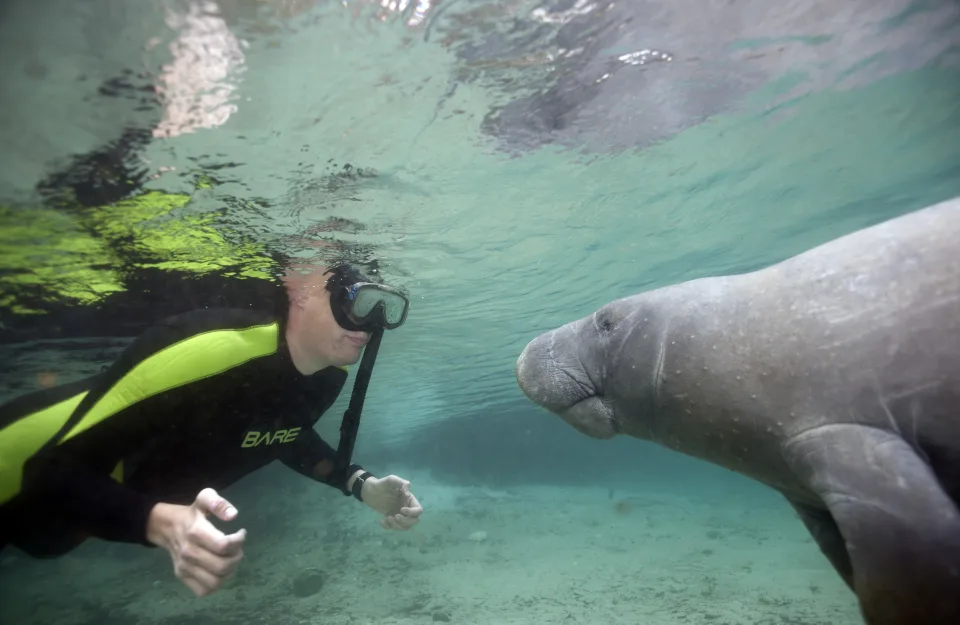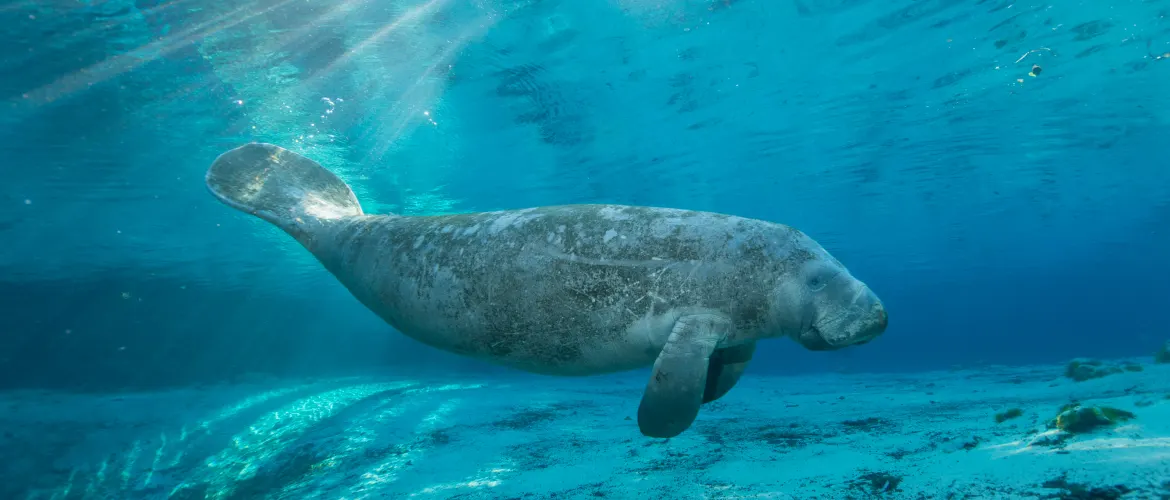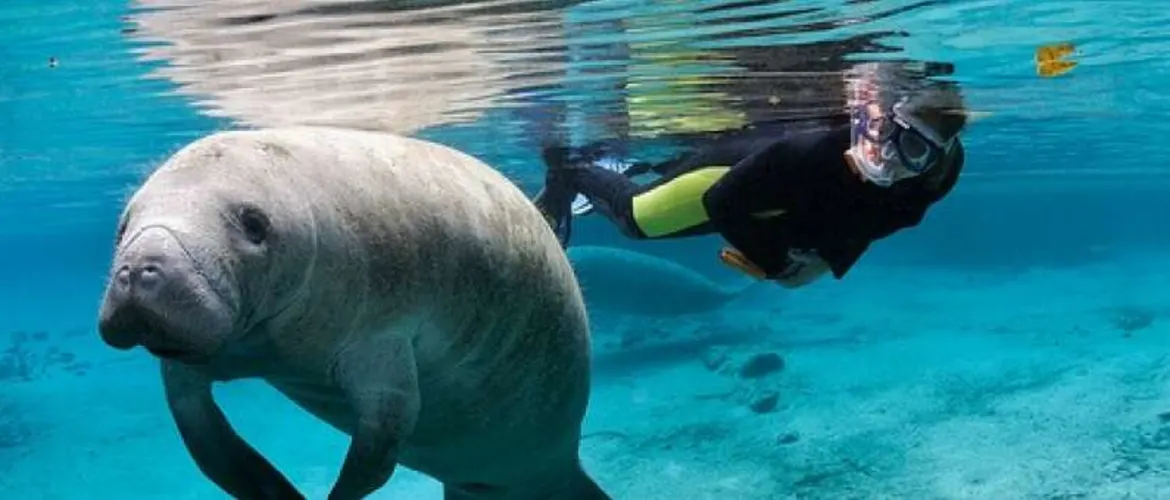USA – One of the only places in the world to meet manatees
As the Gulf of Mexico cools in the winter months, thousands of manatees flock to Florida’s Gulf Coast in search of warmer waters, making it a great time to plan a trip to the Sunshine State – one of the only places in the world that lets you get up close and personal with these docile gentle giants.

Spotting these mammals is a once-in-a-lifetime experience and from mid-November onwards, areas such as Florida’s Crystal River and Tampa offer some of the best places to encounter these animals.
While these mostly herbivorous marine mammals were removed from the endangered species list in 2017, they are still considered a threatened species. Because of this, the state has put measures in place to preserve their habitat for the future. From reducing the size of a high-speed sports zone, banning paddle craft during manatee season and establishing protection zones, the state is committed to protecting their beloved manatees and the ecosystem that they so heavily rely upon.
So, if you’re planning a visit to see these animals in the wild, here are a few things to know. Oh, and don’t forget your manatee manners!

Baby on board
A female manatee is pregnant for a whole year. When born, the calf can weigh up to 66 pounds. The calf will remain with its mother for as long as two years, learning the travel routes to find warmer waters and where to source food.
Just keep swimming
King’s Bay and Three Sisters Springs in Crystal River, are some of the best places in the world to encounter manatees and the only place you can legally swim with these animals in North America.
Watch your manners
Under Florida’s Manatee Sanctuary Act 1978, it is unlawful for any person, at any time, to intentionally or negligently annoy, harass or disturb any manatee. That means, when swimming, observe from the surface and at a distance, practicing passive observation at all times. And if swimming’s not your thing, Florida also offers plenty of different ways to experience these creatures from glass bottom boats in Ocala, to tidal walkways in Apollo beach, there’s something for everyone.

Save the manatees!
Florida’s efforts to conservation and restoration projects are commendable, with the likes of the $40 million Kings Bay Restoration Project – a seven-year plan dedicated to keeping manatees in their natural habitat. By removing toxic algae that reduces oxygen levels and kills off food sources for the manatees and then replanting native eelgrass which provides a crucial food source for the manatees, there is hope for these bays returning to a once again healthy and thriving ecosystem.
Family tree
Manatees closest living relative is the elephant. Manatees have small flippers that are used for navigating the waters and help them touch, scratch, steer and even embrace! West Indian and West African manatees have toenails at the tip of their flippers, similar to their distant relatives. They also share similar thick, wrinkly skin and bristle coarse hair.

Feeling the cold
Contrary to popular belief, manatees don’t have much blubber to keep warm. Most of their body mass is due to their large organs – their lungs can measure up to one meter in size. They’re sensitive to the cold and that’s why, each year, they migrate to the warmer springs of Florida’s Gulf Coast.
Gentle giants
Manatees are the ocean’s largest herbivore. They are calm and peaceful marine mammals which pose no threat to humans. Despite their size (they can measure up to four meters long and weigh a whopping 3,000 pounds) they spend most of their day eating seagrass and other plant life.





